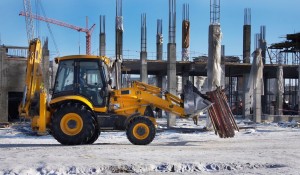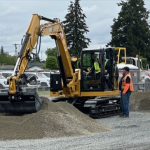A construction worker’s guide to working in harsh conditions
 Well, winter is here! And Washington winters can certainly be cold and brutal. We’re used to the rain, but throw ice and snow into the mix and things get dicey. Nothing can be more annoying on a job site than extreme weather. It not only impedes the job that needs to be done, but it’s also uncomfortable! Whether it’s scorching hot or your equipment is beginning to form icicles, it’s incredibly difficult to say focused in harsh conditions.
Well, winter is here! And Washington winters can certainly be cold and brutal. We’re used to the rain, but throw ice and snow into the mix and things get dicey. Nothing can be more annoying on a job site than extreme weather. It not only impedes the job that needs to be done, but it’s also uncomfortable! Whether it’s scorching hot or your equipment is beginning to form icicles, it’s incredibly difficult to say focused in harsh conditions.
Top Tips for Staying Comfortable in Cold Weather
Although the exact winter gear you use may differ, your approach to tackling big jobs in extreme weather should be relatively the same: Stay protected and comfortable so you can get the job done. You want the weather to be as minimal a distraction as possible. In cold weather situations, staying warm is critical. You must stay protected against frostbite, hypothermia and trench foot. The best idea in this case is to invest in warm clothing.
A warm work coat or insulated coveralls might be a comfortable and practical idea. Your clothing is, after all, your first line of defense against harsh temperatures or conditions. Just make sure you don’t buy clothing so bulky that it impedes your range of motion. You may also want to consider high-visibility clothing. Gloves, headwear, and sturdy, insulated working boots also go a long way to keeping you warm when the weather is cold.
Top Tips for Staying Comfortable in Warm Weather
We may be in winter now, but spring and summer are just around the corner. We tend to focus a lot on the cold weather while we are experiencing it, but excessively hot weather can be just as dangerous. Prolonged exposure to a hot sun can lead to heat stroke, so this should not be overlooked.
During hot months, you want to wear lightweight but protective apparel. And don’t forget high visibility gear that protects you from damaging UV rays. Keep cold water handy and wear lots of sunscreen if you have direct exposure to the sun.
The key is to know when the weather is too extreme. The job is important, but steering clear of bad weather is even more important. In general, it’s best not to work in environments that impact your internal body temperature, which is around 98.6 degrees Fahrenheit for a normal person.
In the end, you’ve got to be prepared for anything when you work in harsh or extreme weather environments. Varying weather conditions can be a challenge for anyone who works outdoors, no matter what they do. Still, the work doesn’t stop when its snowing, raining, or otherwise. So, the best thing you can do is stay focused and comfortable while you get the job done.








